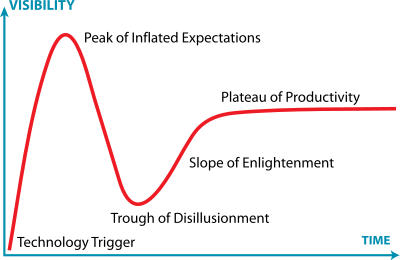Top Five Secrets to Improving Team Communication so that you can Scale your Tech Team without Failing
Speaker: Debbie Madden @debbiemadden200
See the list of all blog posts from the conference
Works for Stride – an agile development consulting company – co-locate with team to improve code and team
“We back a good team and a team is the most important criteria for investment” – venture capitalists
Communication gets harder as number of people grows. Plus teams you need to interface with.
Books Referenced
- The Advantage by Patrick Lencionoi – why organizational health trumps everything else in business
- No Man’s Land – what to do when your cmpany is too big to be small but too small to be big – Doug Tatum
#1 Recognize chaos
-
- Recognize status quo
- Much easier to see someone else’s mess than your own
- All teams go through alternating periods of calm and chaos
- Greiner Curve – 6 periods of calm/chaos as company grows/time goes on.
- Start with creativity
- Leadership crisis – who is in charge
- Then get direction
- Autonomy crisis – who is empowered to do what
- Then get Delegation
- Control crisis – c-suite fighting
- Then get Coordination
- Red tape crisis
- Then get Collaboration
- Growth crisis
- Then get alliances
- Chaos looks like hard things, unhappy people,procedures in the way and misaligned management
- Your engineers didn’t get dumber. You scaled to the next level of chaos
- Peers are most accurate gauge of understanding where team is – don’t hae to be peers on team
#2 Change it up
-
- Chaos doesn’t happen overnight; creeps up on you.
- “Implementing these changes won’t be easy; we’re pretty set in doing things the wrong way”
- Change meeting rhythms: ex: people/roles/length/cadence/agenda
- Kill/combine/keep retrospectives on meetings every 6 month
- Verbally decline to attend meeting
- Create a spreadsheet of all meetings you (or your team) attend. Which can you get rid of completely? Which meetings have same people and can be merged?
- “It’s not that people hate meetings; it’s that they hate bad ones”
- Fist of fives – all rate meeting on scape of 1-5 with finger voting. 1 is waste of time and five is best meeting ever. If didn’t vote five, have opportunity to say what would makeit a five. Can see opportunities for improvement and trends. Did something change?
- Wipe the slate clean and identify what roles are needed. Figure out most ideal role for team members amongst current team members. People work best if passionate about role. See what gaps remain. Big companies struggle when keep people in wrong seat. [seems scary to have to worry about whether “right person for job” every 6 months. she framed it as setting people up for success, but it still seems scary]
- People are more productive when have right values more so than having right skills. The people with great skills and bad values are the toxic ones because they have influence
- As you grow your team, standards increase. This means people who used to be “A players” now aren’t and they don’t want to pair/mentor/etc because struggling.
- Hard to recognize your own mess. A coach can help. Everyone has own view and can share.
#3 Communicate the why
- Feel the meaning
- Understand the why/how/what of what doing
- Repeat the why – it takes time to “take”
- Need employees to believe in the “why”
#4 Prioritize team productivity
- vs individual productivity
- Referenced the Google article from the previous session
- On a good team, people speak in same proportion. Encourage people to speak at meeting. Suggest quieter people email thoughts the next day so have time to think
- Disagree and commit – silence is disaggreement)
#5 Protect team health
- Without a team that trusts each other, none of the above matters
- Trust has capability (skills) and desire (want to be there) aspects
- Healthy conflict – don’t want to avoid conflict entirely
This was a higher level presentation than I thought. I expected more about teams all less about company wide topics. [I double checked the abstract and confirmed it says team]. She ran out of time for #4 and #5 so they were rushed despite importance
She also went on a rant about telecommuters not collaborating. That’s not always true. Just because YOUR team doesn’t do Google Hangouts well doesn’t mean remote people don’t contribute. I don’t telecommute often, but my co-workers do. And they are effective. She also dismissed remote pair programming and telecommuting being about saving a 30 minute commute and being in your PJs.


